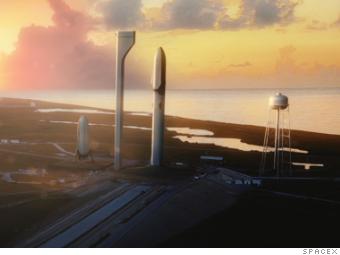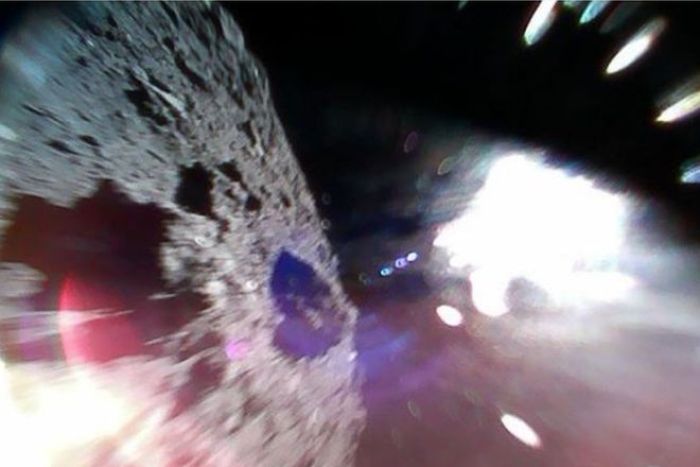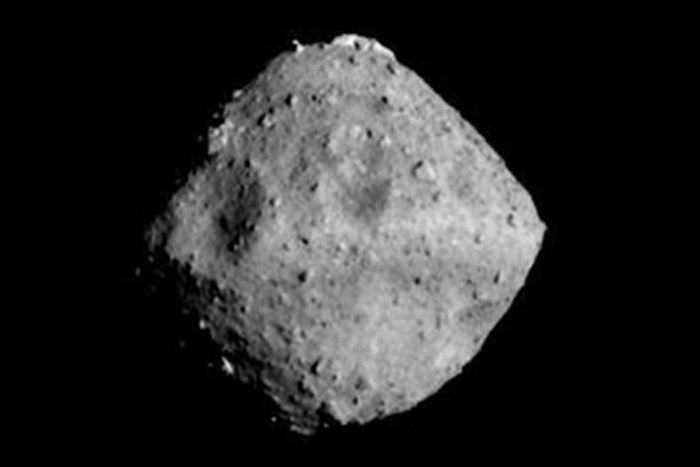If it stops her acting, I reckon most would be ok with it.
Can we do Katy Perry too while we are at it?
If it stops her acting, I reckon most would be ok with it.
Can we do Katy Perry too while we are at it?
Which is it Snags or Steaks??
Now that’s a phallic rocket!

@diggers - you are a shoo-in for creating the DJ King thread. 
If you haven’t seen this before take a look.
http://web.stanford.edu/~cdebs/GameOfLife/
A BRIEF HISTORY
The Game of Life was invented in 1970 by the British mathematician John Horton Conway . Conway developed an interest in a problem which was made evident in the 1940’s by mathematician John von Neumann , who aimed to find a hypothetical machine that had the ability to create copies of itself and was successful when he discovered a mathematical model for such a machine with very complicated rules on a rectangular grid. Thus, the Game of Life was Conway’s way of simplifying von Neumann’s ideas. It is the best-known example of a cellular automaton which is any system in which rules are applied to cells and their neighbors in a regular grid. Martin Gardner popularized the Game of Life by writing two articles for his column “Mathematical Games” in the journal Scientific American in 1970 and 1971.
Should be in the travel thread.
How good !!!
about an hour ago
Posted
 Photo: A picture from Japan’s Minerva II Hayabusa2 rovers after they successfully completed their landing. (Twitter: Hayabusa2@JAXA)
Photo: A picture from Japan’s Minerva II Hayabusa2 rovers after they successfully completed their landing. (Twitter: Hayabusa2@JAXA)
Japan has successfully landed two small rovers on the surface of an asteroid in a history-making mission that could provide clues to the origin of the solar system.
Japan’s space agency (JAXA) released photos taken by the MINERVA-II-1 rovers from the surface of Ryugu, a kilometre-wide asteroid orbiting between Earth and Mars.
The rovers, each with a diameter of 18cm, height of 7cm and weight of about 1.1kg, were released from the Hayabusa2 spacecraft on Friday
The JAXA team confirmed on Twitter that both survived the landing, are in good condition and moving on the surface.
“The good news made me so happy,” Hayabusa2 project spokesperson Takashi Kubota said in a statement on the mission website.
“The image taken by MINERVA-II-1 during a hop allowed me to relax as a dream of many years came true. I felt awed by what we had achieved in Japan.”
“This is just a real charm of deep space exploration.”
 Photo: This image from 40km above shows Ryugu’s shape and the boulders on its surface. (Supplied: JAXA, University of Tokyo, Kochi University, Rikkyo University, Nagoya University, Chiba Institute of Technology, Meiji University, Aizu University, AIST)
Photo: This image from 40km above shows Ryugu’s shape and the boulders on its surface. (Supplied: JAXA, University of Tokyo, Kochi University, Rikkyo University, Nagoya University, Chiba Institute of Technology, Meiji University, Aizu University, AIST)
Many asteroids are believed to have formed at the dawn of the solar system. Scientists claim Ryugu could contain organic matter that may have contributed to life on Earth.
Ryugu is a C-type asteroid — these are believed to contain the organic material and water that are considered the seeds of life.
They are also the most common type, making up around 75 per cent of asteroids, but rarely make their way to Earth — so scientists have few opportunities to study their contents.
By exploring Ryugu’s surface and taking samples, the Hayabusa2 mission could help scientists explain the origins and evolution of the Earth.
Hayabusa2 arrived near the asteroid — which is about 280 million kilometres from Earth — in June, around three-and-a-half years since the voyage began.
To lower the rovers onto the surface, Hayabusa2 approached as close as 55 metres to Ryugu, waited for one minute and then rose back to its waiting position about 20 kilometres above its surface.
The two rovers will continue to measure surface temperatures and take photographs on the asteroid.
They move around by “hopping” up to 15 metres at a time, because the extremely weak gravity on the asteroid makes rolling difficult.
They can continue jumping as long as their solar panels and power last, JAXA said.
It was during their first hops that the rovers captured the initial images of Ryugu’s surface.
“With the image taken during the hop on the asteroid surface, I was able to confirm the effectiveness of this movement mechanism on the small celestial body and see the result of many years of research,” head of the MINERVA-II1 project Tetsuo Yoshimitsu said in a statement.
 Photo: An artists impression of what MINERVA-II1 rovers look like hopping on the surface. (Supplied: JAXA)
Photo: An artists impression of what MINERVA-II1 rovers look like hopping on the surface. (Supplied: JAXA)
Hayabusa2 is scheduled to attempt three brief touch-and-go landings on the asteroid to collect samples.
Since the rovers landed on Ryugu, scientists have also been looking for suitable landing sites for larger vehicles on the uneven surface.
The first attempt to do this is expected sometime in October.
The spacecraft is then set to release a German-French lander called MASCOT carrying four observation devices in early October and a bigger rover called Minerva-II-2 next year.
Hayabusa2 is due to return to Earth in late 2020.
ABC/Wires
Topics: space-exploration, spacecraft, planets-and-asteroids, japan
‘280kms’ sounds awfully close.
Yeah, they just landed it Shepparton.
later in the article it says 280 million kilometres
meh - what’s a million here or there if you’re an asteroid?
When I read that story, I read asteroid but I was thinking comet.
And I thought hoooow tf?
Then I got it.
Oh. Oh, right.
kinda science and kinda tech and kinda - is this going to be mainstream?
I’ve seen this movie, they better keep Willem Defoe far away from it.
And Biff.
Nah. Thats just a Furphy.
Like the Segway, except it’s not crap.
not sure where this was meant to be going, but I love where it went
Boston Dynamics getting funky
Signed up for that satellite spotting.
There was meant to be one on Sunday night but ■■■■■■ if I know what I’m looking for.
Anyway, found this vid on YouTube and thought it was pretty cool and somewhat sciency.
Gotta love the fact that for all the technology and theoretical modelling etc ultimately science still comes down to “let’s try it and see what breaks”
Have you spotted the International Space Station?
The link below shows you when and where to look for it depending on where you are.
When you see it, it’s a “wow, that’s cool” moment. And it’s got some speed behind it too.